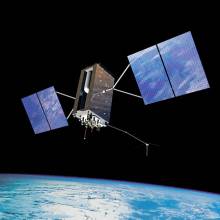
The live webinar took place on January 22, 2013.
Webinar Presentation Slides
- Webinar PDF Archive (Registration required)
On Tuesday, January 22 2013, the presenters covered:
The live webinar took place on January 22, 2013.
Webinar Presentation Slides
- Webinar PDF Archive (Registration required)
On Tuesday, January 22 2013, the presenters covered:
- The history of GNSS receiver design, spectrum allocation and debate over performance standards
- Existing standards and those under active development
- The case for GNSS standards
- Which receiver functions should standards address?
- Overseeing and enforcing GNSS standards
- Lessons learned from applications domains that already have standards
- Test regimes for evaluating and certifying GNSS user equipmen
Presenters:
 JULES McNEFF served as GPS Program Element Monitor at Air Force Headquarters in the Pentagon from 1986–89, as GPS focal point in the Office of the Secretary of Defense (OSD) Command, Control, Communications, and Intelligence (C3I) and Acquisition & Technology (A&T) from 1989–96, in industry supporting the National Security Space Architect from 1996–2002, as special assistant to the NASA administrator from 2002–03, and in supporting OSD Networks and Information Integration (NII) and the DoD Chief Information Officer (DoD CIO) from 2003 to present. He is vice-president for strategy and programs at Overlook Systems Technologies, Inc., in Vienna, Virginia, USA.
JULES McNEFF served as GPS Program Element Monitor at Air Force Headquarters in the Pentagon from 1986–89, as GPS focal point in the Office of the Secretary of Defense (OSD) Command, Control, Communications, and Intelligence (C3I) and Acquisition & Technology (A&T) from 1989–96, in industry supporting the National Security Space Architect from 1996–2002, as special assistant to the NASA administrator from 2002–03, and in supporting OSD Networks and Information Integration (NII) and the DoD Chief Information Officer (DoD CIO) from 2003 to present. He is vice-president for strategy and programs at Overlook Systems Technologies, Inc., in Vienna, Virginia, USA.
 CHRIS HEGARTY played an instrumental role in the selection of the frequency for the GPS third civil signal (L5), co-led the development of the specification for this signal, and served on a U.S./European technical working group that helped produce agreement on a common L1 civil signal design. Hegarty is chairman of the Program Management Committee (PMC) of RTCA, a private, not-for-profit corporation that develops consensus-based recommendations regarding communications, navigation, surveillance, and air traffic management (CNS/ATM) system issues.He is is director for communication, navigation, and surveillance engineering and spectrum at The MITRE Corporation.
CHRIS HEGARTY played an instrumental role in the selection of the frequency for the GPS third civil signal (L5), co-led the development of the specification for this signal, and served on a U.S./European technical working group that helped produce agreement on a common L1 civil signal design. Hegarty is chairman of the Program Management Committee (PMC) of RTCA, a private, not-for-profit corporation that develops consensus-based recommendations regarding communications, navigation, surveillance, and air traffic management (CNS/ATM) system issues.He is is director for communication, navigation, and surveillance engineering and spectrum at The MITRE Corporation.
 RON BORSATO is vice-chair of the CTIA’s ERP Ad-Hoc Subgroup and also served as a technical advisor to the cellular sub-team of the LightSquared TWG. He actively participates in 3GPP on LTE and OTA matters. Borsato served as chair of the CTIA GPS Subgroup during the development of the test requirements. Borsato is principal architect at Spirent Communications and has 17 years of wireless industry experience.
RON BORSATO is vice-chair of the CTIA’s ERP Ad-Hoc Subgroup and also served as a technical advisor to the cellular sub-team of the LightSquared TWG. He actively participates in 3GPP on LTE and OTA matters. Borsato served as chair of the CTIA GPS Subgroup during the development of the test requirements. Borsato is principal architect at Spirent Communications and has 17 years of wireless industry experience.
Moderator:
 DEMOZ GEBRE-EGZIABHER is an associate professor of aerospace engineering and mechanics at University of Minnesota-Twin Cities, USA. His research deals with the design of multi-sensor navigation and attitude determination systems for aerospace vehicles. Recently his work has focused on multi-sensor solutions for operations in GNSS-stressed and -denied environments.
DEMOZ GEBRE-EGZIABHER is an associate professor of aerospace engineering and mechanics at University of Minnesota-Twin Cities, USA. His research deals with the design of multi-sensor navigation and attitude determination systems for aerospace vehicles. Recently his work has focused on multi-sensor solutions for operations in GNSS-stressed and -denied environments.
Four hundred and fifty people registered for this webinar on GNSS
receiver standards and certification. They came from 28 states and
provinces (US and Canada) and 43 countries. They were divided roughly
into fifths: GNSS end users, equipment manufacturers, government,
product or application designers and system integrators.





